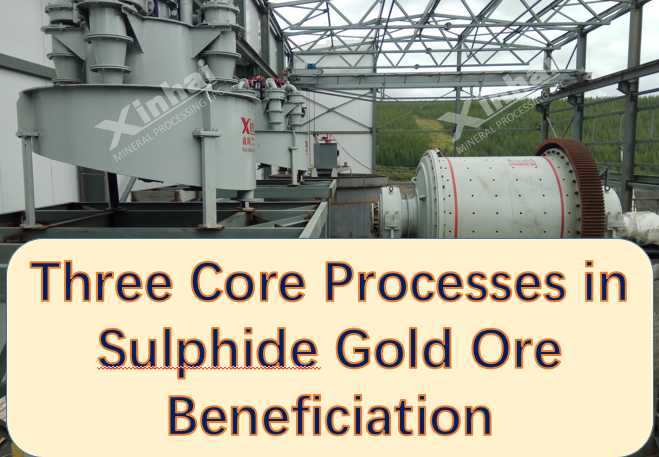Three Core Processes in Sulphide Gold Ore Beneficiation
2025-11-14 Xinhai (13)
2025-11-14 Xinhai (13)
If you have any questions, please contact us through the following ways, we will give you more and better assistance!

Sulfide gold ore refers to a special type of gold deposit where gold exists in microscopic form within the crystal structure of sulfide minerals such as pyrite (FeS₂) and arsenopyrite (FeAsS). Typically grading between 0.5 and 15 grams per tonne, this ore requires specialised extraction techniques for effective recovery. The three predominant processing methods currently employed are gravity separation, flotation, and leaching, each suited to distinct ore characteristics.
Gravity separation exploits the density disparity between gold (density 19.3 g/cm³), sulphides (4–5 g/cm³), and gangue (2.6–2.8 g/cm³). Separation is achieved using equipment such as jigs and shaking tables. This process is particularly suited for processing ores containing coarse-grained free gold (particle size >0.074mm) or low sulphide content (<10%), demonstrating significant advantages in small-to-medium-sized mines and regions with stringent environmental requirements. As a pre-treatment process, it effectively reduces subsequent chemical processing costs, though its effectiveness in recovering fine-grained encapsulated gold is limited.

Flotation represents the most widely applied method for sulphide gold ore beneficiation. Through the synergistic action of collectors (e.g., xanthates), frothers (e.g., pine oil), and modifiers, sulphide mineral surfaces become hydrophobic and are carried upward by bubbles, forming a gold-bearing sulphide concentrate. This process achieves recovery rates of 85%-95% for fine disseminated gold (particle size <0.074mm) and adapts to varying sulphide content fluctuations. For complex ores such as those with high arsenic content, roasting or bio-oxidation pre-treatment is often required to enhance recovery efficiency.
For complex ores resistant to flotation and gravity separation (e.g., arsenic-, antimony-, or carbon-bearing ores), leaching processes directly extract gold through chemical dissolution. Mature cyanide leaching employs cyanide to form gold-cyanide complexes, subsequently recovered using zinc powder or activated carbon, achieving gold recoveries of 90%-98%. However, this requires strict pH control (10-11) and comprehensive wastewater treatment. Cyanide-free leaching methods (e.g., thiourea, thiosulphate) offer superior environmental credentials but entail higher costs and require further refinement for broader applicability.
Selecting an appropriate process flow requires detailed ore characterisation studies: gravity separation is prioritised for coarse-grained free gold; flotation is suitable for fine-grained associated gold; complex, refractory ores necessitate leaching processes. In practical production, combining multiple processes often yields the most favourable technical and economic performance.